Merino wool? Polyester? Polypropylene? A demented mixture of all three, maybe? What’s the best baselayer fabric for you and what else do you need to know about baselayers?
Does merino wick? Is Polypropylene smelly? Couldn’t you just get away with a cotton tee-shirt? And what’s the best baselayer for really hot conditions? Here’s a run-down of the most commonly-found baselayer fabrics and the strengths and weaknesses of each.
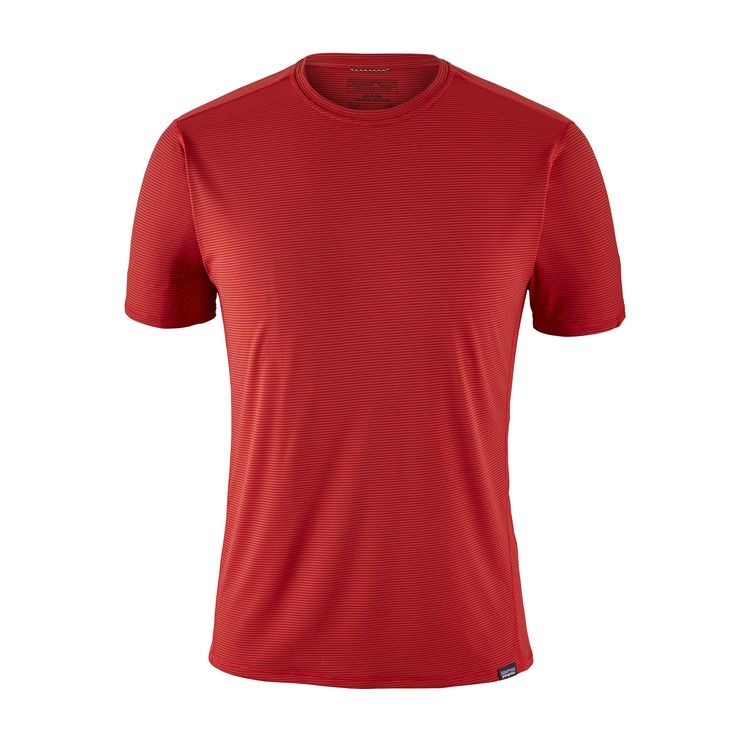
Capilene Cool Tee polyester
Polyester baselayers
Polyester is far and away the most popular fabric used for baselayer and is the default choice for most outdoor brands. Patagonia Capilene, Arc’teryx Phasic, Rab Motiv and plenty of others are all Polyester fabrics. Why? In general terms, Polyester wicks moisture away from the skin fast and dries quickly when it does get damp. More sophisticated fabrics are engineered to use different yarn structures next to the skin and on the outer face to encourage even faster moisture movement. Generally the thinner the fabric, the faster it will wick and dry, which makes thin polyester baselayers a good call in hotter conditions in particular. The downsides are that left to its own devices, Polyester will quickly develop an unappealing odour during and after use. Better fabrics use an effective silver-based treatment like Polygiene or Berghaus’s Argentium to minimise the impact. My experience is that it works pretty well, but some individuals find it less effective than others – it depends on your individual microbes apparently.
Pros: Wicks and dries fast, competitive price, permanent anti-microbial treatments reduce pong to reasonable levels.
Cons: Still loses out on odour control relative to merino wool, is effectively a plastic petro-chemical product.
Gearhead says: Ideal choice for those who run hot and sweaty in particular.
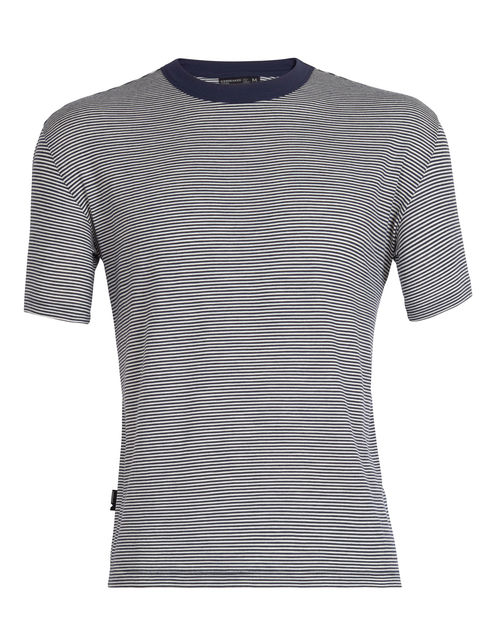
Icebreaker merino wool tee
Merino wool
Merino has expanded from being a niche choice a few years back to a proper mainstream option. Made from the wool of merino sheep, it has finer fabrics than mainstream wool, so it’s not generally scratchy and feels luxurious next to skin. Merino is often described as offering good wicking abilities, but the reality is somewhere in the middle. It copes well with low level activity and small amounts of vapour, which it holds in suspension within its structure apparently, BUT when things get really hot and sweaty – running or biking or in hot conditions – it tends to get overwhelmed, soggy and uncomfortable, a bit like a wet sheep in fact. For low-output activities though, it’s brilliant. Merino’s other super powers include an improbably ability to resist odour. You can wear merino for day after day without any noticable pong, that makes it ideal for multi-day trekking use as well as everyday wear. It also means less laundering and no micro-plastic shedding, both good for the environment. There are downsides: good quality merino wool is expensive stuff and cheaper versions may use coarser fibres and be more prone to holing. Merino generally is less durable than synthetics and with heavy use tends to hole – users often mistake this for moth damage, but often it’s just damage from wear and washing. Finally, some merino comes from sheep which are subjected to a controversial treatment known as mulesing. As with down, look for ethically-sourced merino.
Pros: Super comfortable wool without the scratchiness for moderate level use, excellent anti-odour, multi-day performance, natural product so no plastics.
Cons: Struggles to cope with high-intensity, sweaty use and dries slowly, generally expensive and more fragile than synthetics.
Gearhead says: A brilliant fabric for everyday, low-intensity and multi-day use, lightweight versions work well in hot conditions too, but struggles with proper hot and sweaty use when it’s easily overwhelmed and goes soggy then takes a while to dry out.
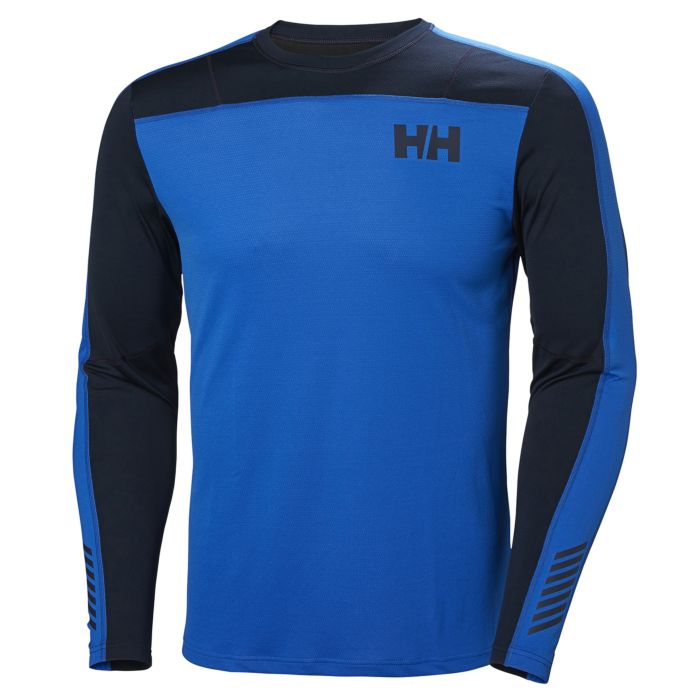
Helly Hansen Lifa
Polypropylene (hello Lifa)
Polypropylene got a bad rap as the fibre used by Helly Hansen for its original Lifa baselayers – remember the striped arms – commonly dubbed ‘smelly Helly’. The good news is that modern Lifa is much, much better in this respect. The original fabric had a tendency to trap skin debris and oils at a micro-level, which in turn were broken down by bacteria causing that unappetising pong. New Lifa has been re-engineered with fewer blunt, debris-trapping ends and is much better. Otherwise polypropylene has a lot going for it. It’s essentially hydrophobic, which means it absorbs virtually no liquid, so dries really fast in use – much faster than alternatives. It also allows moisture vapour to move outwards and away from the body. You can also wash it at 60˚C which kills microbes well dead. Much harder to find than Polyester, but both Helly Hansen and Wild Stripes – www.wildandstriped.com.
Pros: Super fast-drying makes it a great option for high-intensity, sweaty use. Can be washed at 60˚C eliminating microbes.
Cons: Hard to find, Lifa’s residual reputation.
Gearhead says: If you want the absolute fastest-drying baselayer, this is it. Sweat all you like, polypropylene won’t care and moisture gets dissipated as steam… or something along those lines.
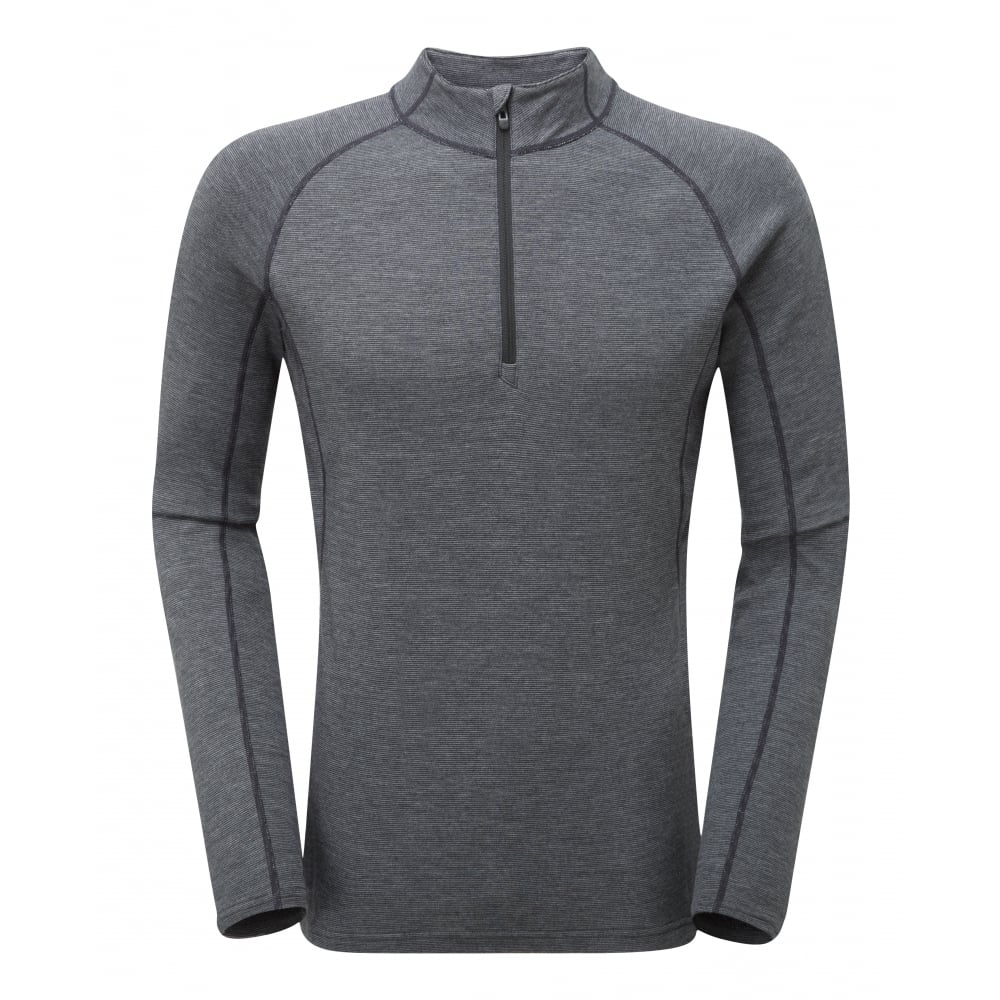
Montane Primino
Hybrid merino/synthetics
So what if you want something that combines the qualities of merino wool and a synthetic? You’re in luck, there are various merino/polyester blended or hybrid fabrics which do just that. They don’t wick quite as well as a 100% polyester fabric and they don’t have quite the same feel and odour-cheating abilities as pure merino fabric, but combo materials like Rab’s merino / polyester blend – previously known as MeCo – and Montane’s Primino mix of Primaloft fibres and merino wool, are an excellent balance between the two and work well as all-round options. They do tend to be a little pricier than synthetics, though cheaper than top-notch pure merino and with long-term, heavy use, I found the merino fibres in the Rab fabric eventually simply wore away in high abrasion zones leaving a synthetic mesh, but that took a lot of pack-toting abuse.
Pros: Ace balance of fast-wicking and drying with decent comfort and odour control, tougher than pure merino as well.
Cons: Not quite as good with really high output use as a pure synthetic.
Gearhead says: A good half-way house between merino wool and synthetics, hybrid fabrics mix the good points of both. They don’t handle moisture quite as well as pure synthetics fabrics, but make a great compromise option for most folk.
When the going gets hot!
I’ve tried a few odd hot weather-specific technologies, mainly Columbia’s Omni Freeze and Omni Freeze Zero, which use sweat-activated cooling prints to cool your skin and an adidas technology with small metal cooling buttons in strategic areas – the latter did actually seem to work, the former didn’t really help me. Far better, in my experience, is a fabric called Polartec Delta, which mixes a loose, airy weave and high wicking fibres which actually seem to make an appreciable difference in really high temperatures. Arc’teryx has a new hot weather running tee called the Cormac, which incorporates mesh panels and which I’ve found similarly very effective. More generally, I’ve found that thinner fabrics like the new Patagonia Capilene Cool, simply wick faster and dry quicker than thicker alternatives, which makes logical sense.
Pros: Work better when things get hot.
Cons: Limited thermal value
Gearhead says: Polartec Delta is hard to find – Macpac and Salewa both use it – but it’s the one specific fabric I’ve found that really does make a difference in blisteringly hot conditions.
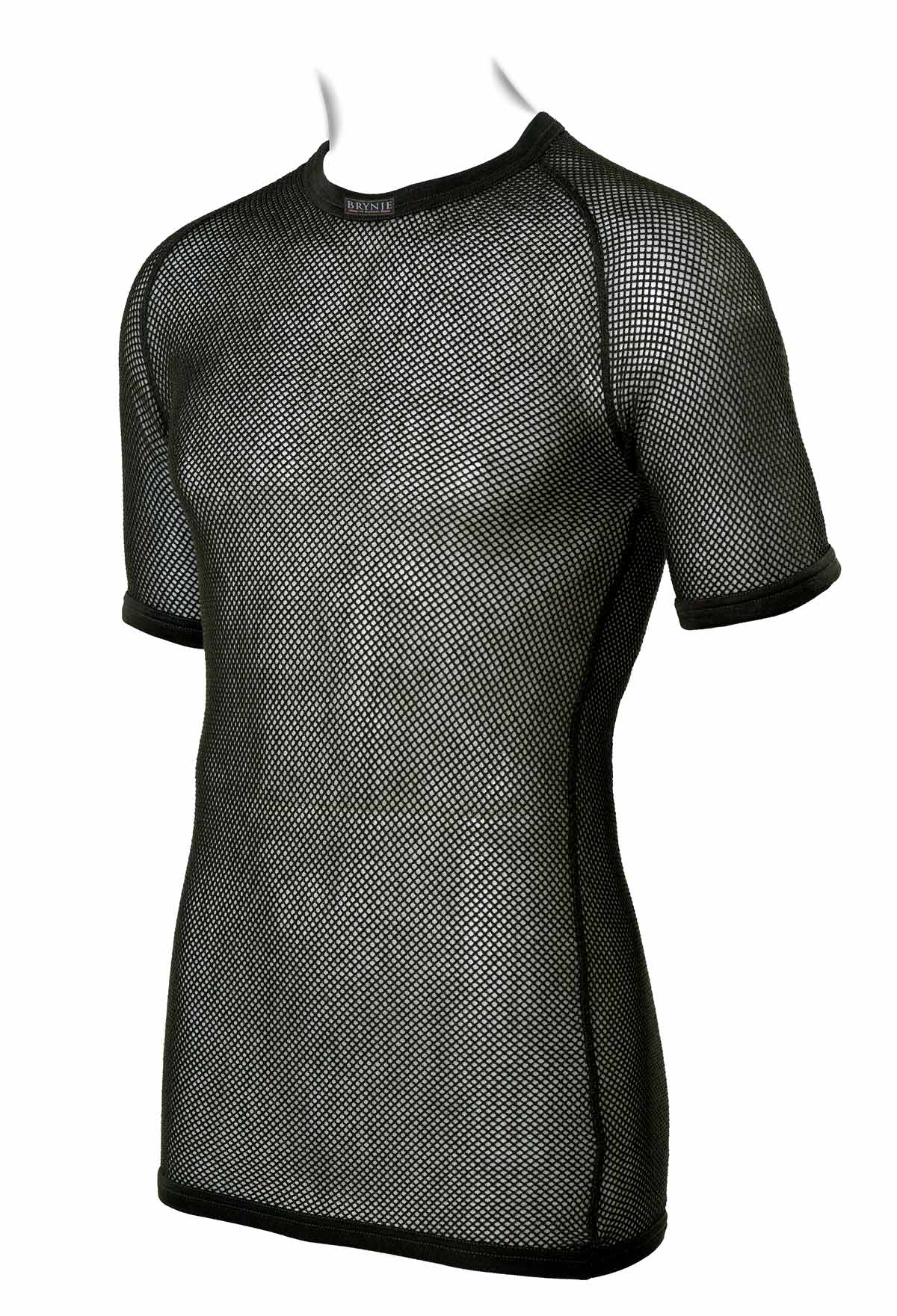
Brynje mesh baselayer
Mesh baselayers: the string vest effect
One final shout out to the excellent Brynje of Norway and similar mesh-type baselayers. They work on a similar principle to a string-vest, trapping air when layered underneath other clothing, but breathing super fast when exposed to the outside. That makes them a superb option if you’re wearing ventable outer-layers and want to be able to dump heat rapidly. The Brynje range includes polypropylene fabrics which also dry super quickly. Not the most flattering garments out there unless you’re into the Right Said Fred look, but worn with something like Paramo, with abundant venting, they work really, really well.
Pros: Super cooling when exposed via venting, warm when not, dry really fast.
Cons: Aesthetics and sun-burn potential make them an interesting stand-alone option.
The big answer
Here’s the thing: the best baselayer fabric is very much down to you. For low level use, merino wool has a great mix of next to skin comfort and odour resistance. It’s not great at handling lots of sweat though, for that your best bet is lightweight polyester or for super-rapid drying, polypropylene. And if you’re somewhere in the middle? Merino/synthetic mixes really do give a good balance of both, though without being quite as good as either constituent on their major plus points. Ultimately, it comes down to how hot and sweaty you run and how deep your wallet is.


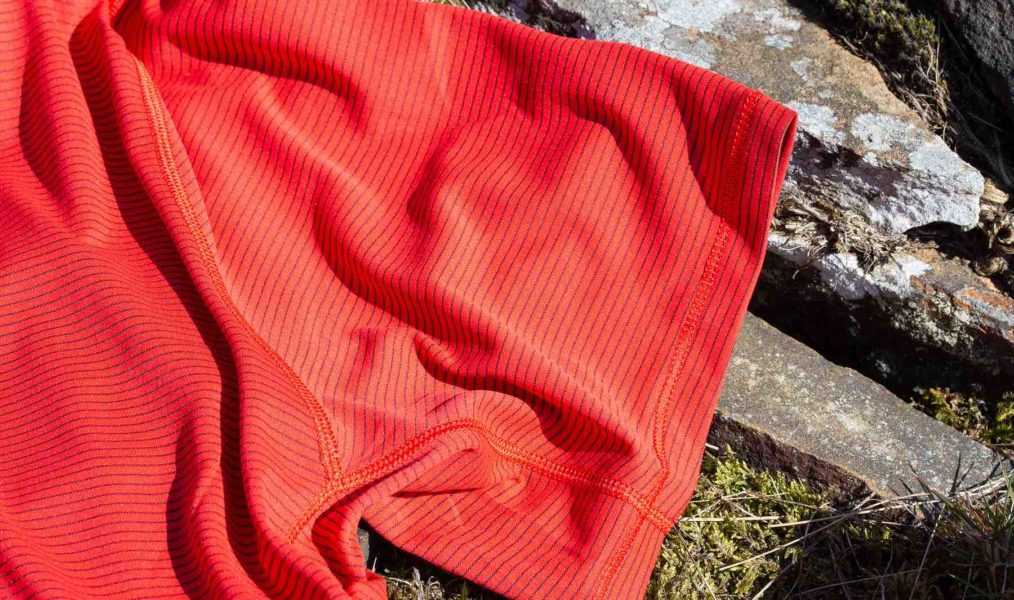




Comments
How about silk? Or silk with a bit of elastomer to make it stretchy? I use it for ski touring on hot spring days. It seems to be pretty warm in the cold or morning but still agreeable to wear when it get hot. The stuff of emperors!